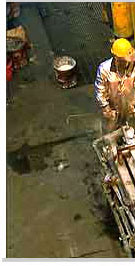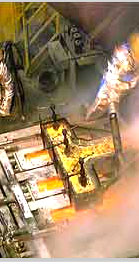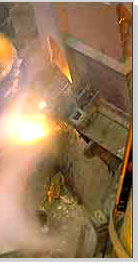The profoundity of the casting applications in industries can be gauged from the fact that USA has roughly shipped over 14 million tons of castings worth more than $33 billion in the year 2005. It is projected to increase to $37.67 billion by 2008 and rise to $42.6 billion in 2015. It is worthwhile here to mention that 90% of all the manufactured goods and all manufacturing machinery have casting applications.
Casting enables pieces to be combined into a single part, eliminating,assembly and inventory. Compared to machined parts, costs are much less. Virtually any metal that can be melted is cast.
The size can be from a few grams (for example a watch case) to several tones (marine diesel engine) the shape from simple (manhole cover) to complex (6-cylinder engine block). Order size from one-off (paper mill crusher) to massive production (automobile pistons).
Castings are used virtually every where. The transport sector and heavy equipment is the predominant consumer (for farming, construction and mining) taking up over 50% of castings produced.
A sector wise casting consumption is given below which highlights the importance of casting in any industrial set up.
- Transport : Automobile, aerospace, railways and shipping
- Heavy Equipment : Construction, farming and mining
- Machine Tools : Machining, casting, plastics molding, forging, extrusion and forming
- Plant Machinery : Chemical, petroleum, paper, sugar, textile, steel and thermal plants
- Defence : Vehicles, artillery, munitions, storage and supporting equipment
- Electrical Equipment Machines : Motors, generators, pumps and compressors
- Hardware : Plumbing industry pipes, joints, valves and fittings
- Household : Appliances, kitchen and gardening equipment, furniture and fittings
- Art Objects : Sculptures, idols, furniture, lamp stands and decorative items



As already seen casting applications are an integral part of any manufacturing process. Some of the popular usages are enumerated below:
